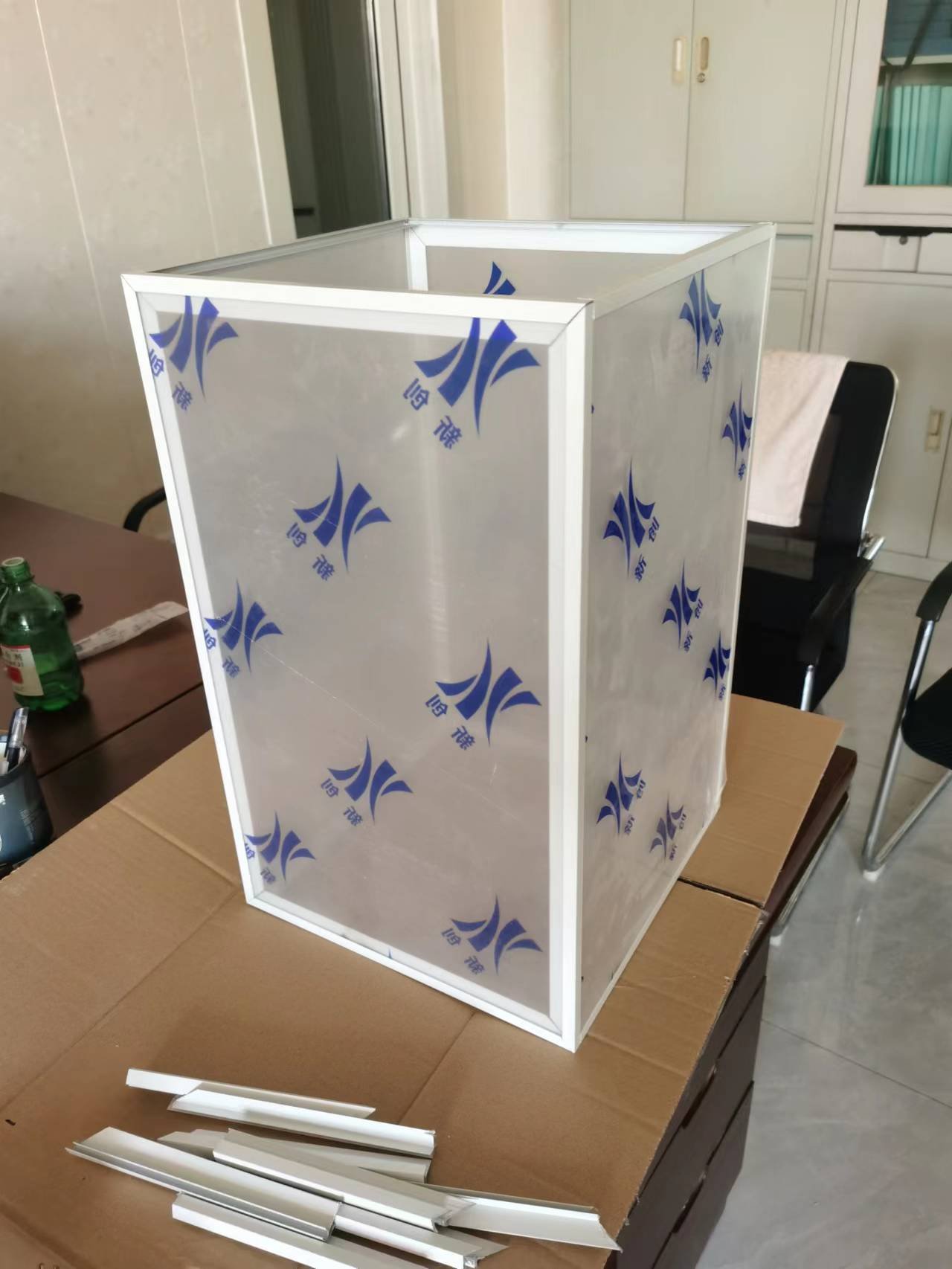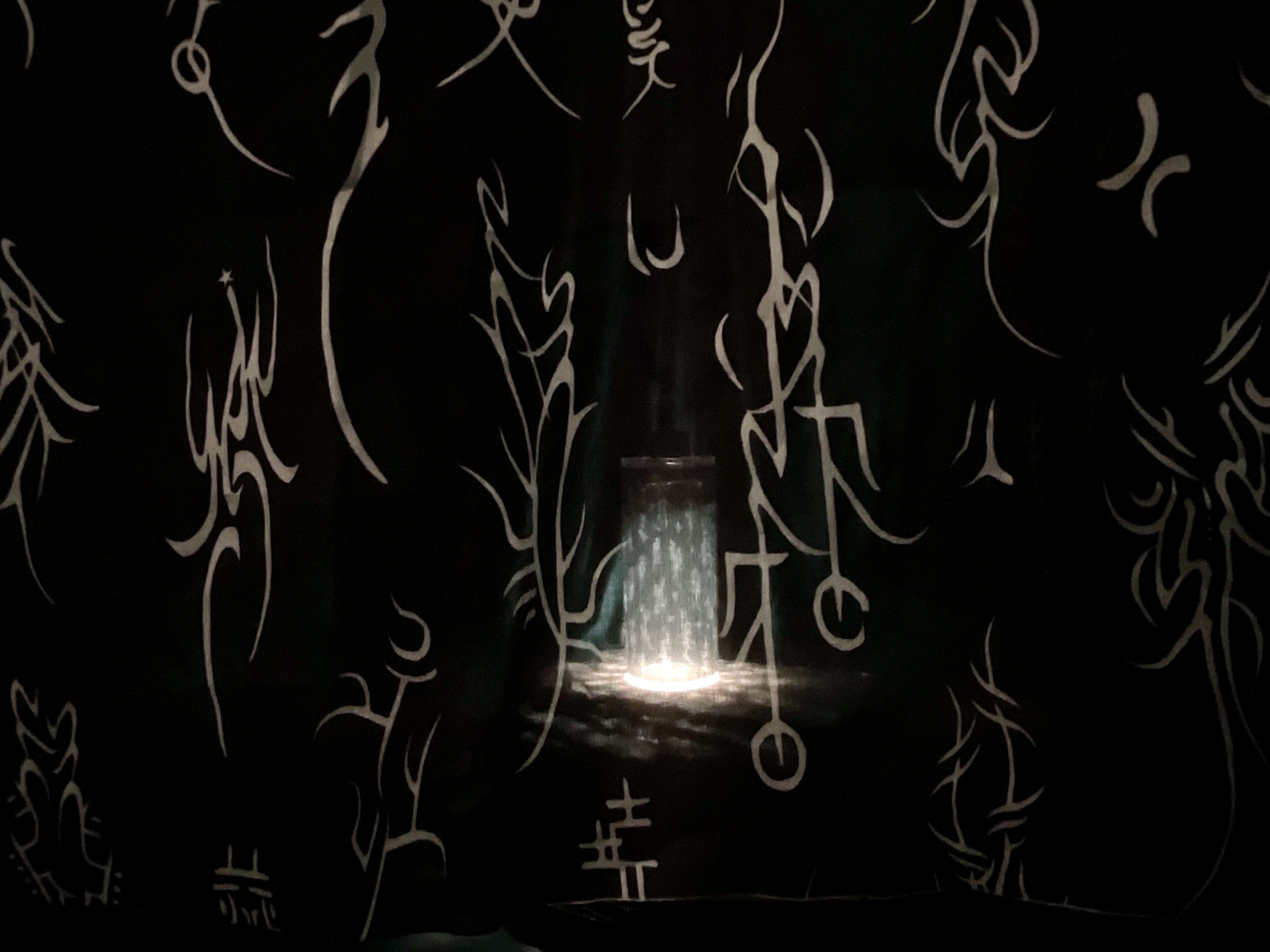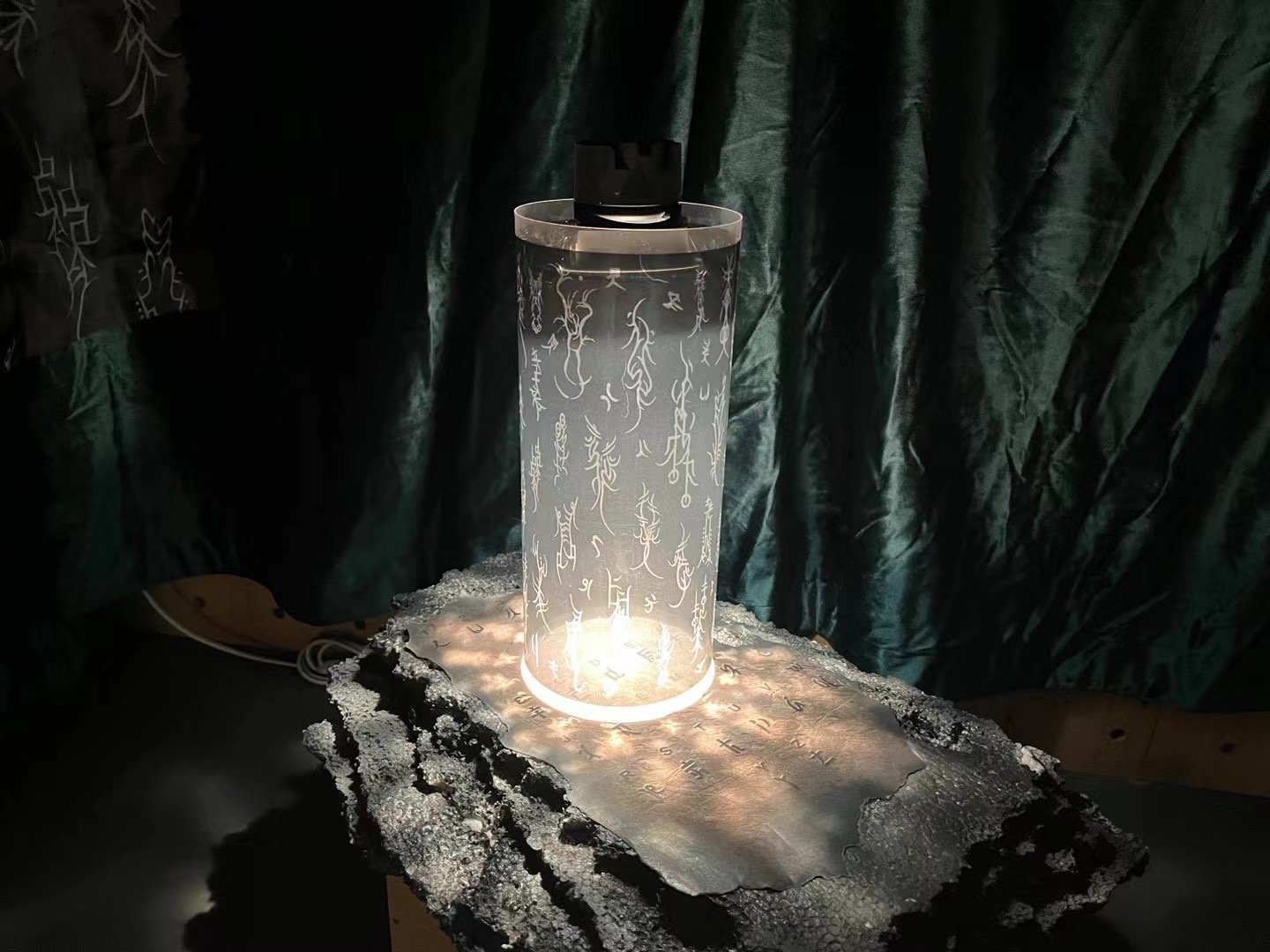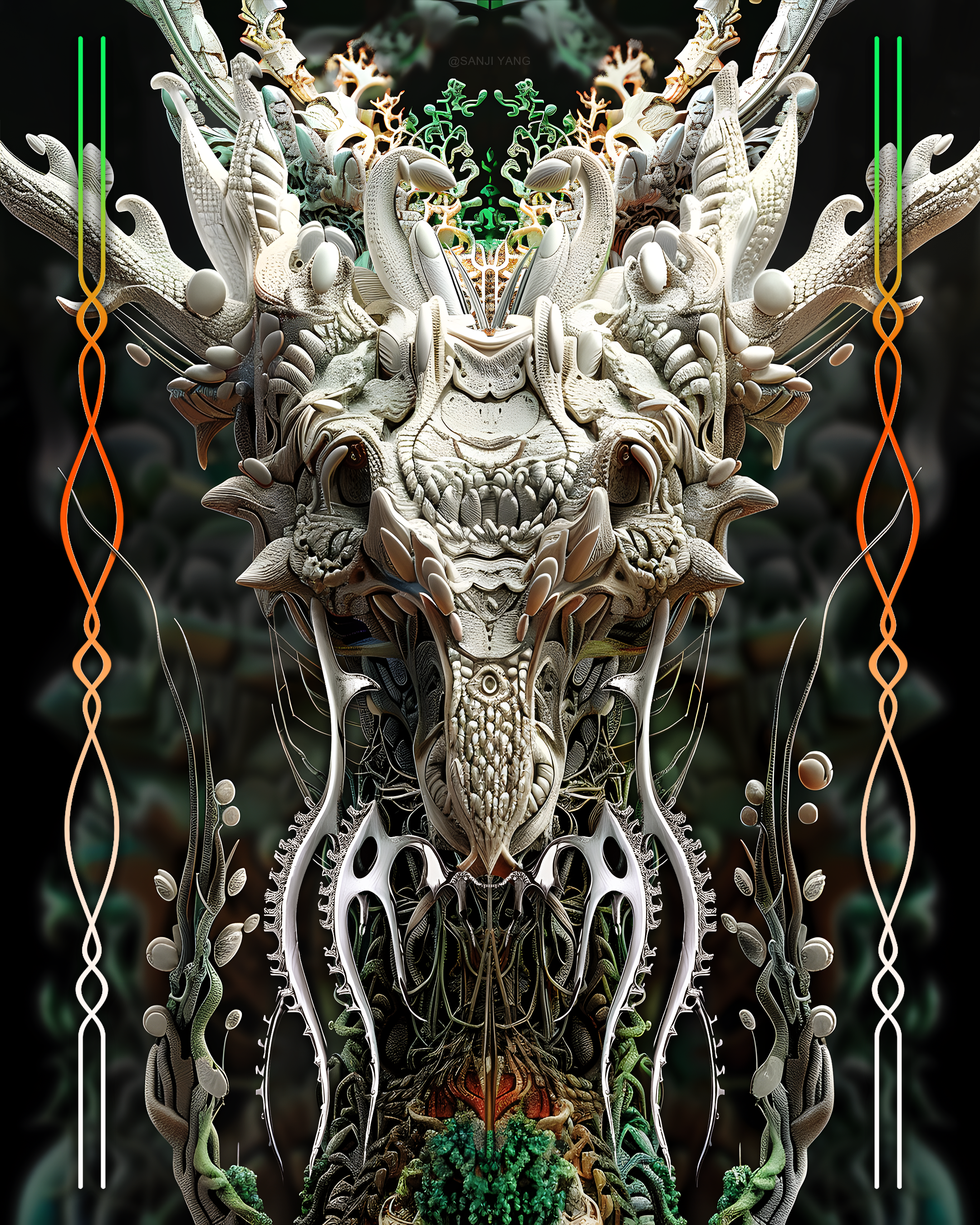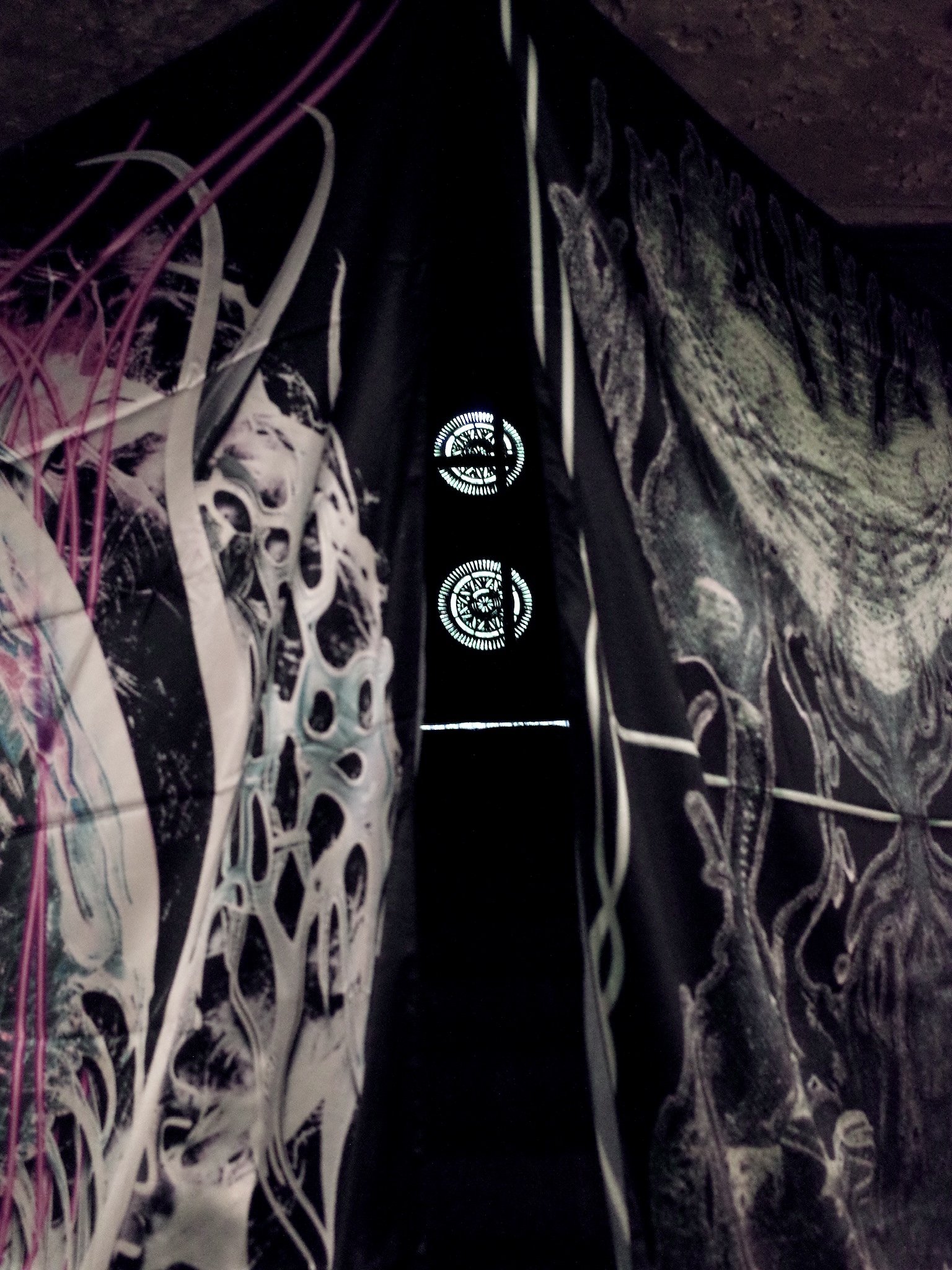
2024
Sanji Yang
CONTROL
Unit 1
“ The Uncanny Valley Effect “ —— Masahiro Mori
WHAT IS THE UNCANNY VALLEY?
" The uncanny valley " is a term coined by roboticist Masahiro Mori to describe the discomfort or unease people feel when encountering robots that possess certain human-like features. These robots typically conform to our expectations in terms of appearance and behavior, but fall short in some aspect, leading to the generation of negative emotions. This sensation is vividly referred to as the "uncanny valley."
However, this peculiar feeling is not exclusive to interactions with robots. Digital avatars and animated characters can now also evoke similar unsettling emotions. Masahiro Mori suggests that this may be a form of instinctual self-preservation.
In an article published by Masahiro Mori over fifty years ago in the Japanese journal "Energy," he remarked, "I believe the emergence of this emotion reveals the secrets deep within the uncanny valley. Why do we feel unease? Could it be a part of the human instinct for self-preservation?"
In order to better apply the Uncanny Valley principle to my artwork, I have attempted to construct a dataset for the Uncanny Valley, using myself, my friends, and virtual personas as prototypes.
Uncanny Valley dataset based on me
Uncanny Valley dataset based on my friends, and virtual personas
When establishing this dataset, I selected six representative categories of visual archetypes:
drawing, humanoid, robot, human, orc, and beast,
serving as transitional nodes that essentially cover a spectrum of all figure types.
Methodologically, I utilized two generative software tools, Midjourney and Runway, to blend a comprehensive dataset comprising detailed variations of 20 distinct forms.
Based on the above-mentioned database, I conducted a survey on various online social media platforms and offline. With a total participation of 100 individuals, both online and offline, there was unanimous agreement that Image Number 8 is considered the most terrifying, constituting 22% of the responses. Images Number 7 to 9 form the range most commonly chosen as the most horrifying, with a combined percentage of 72%.
Offline questionnaire
Netizen 1: 6 7 8 9 is quite scary. The horror element of the little eyes is the most scary to me.
Netizen 2: I think 678 is particularly scary to me and makes me feel uneasy.
Netizen 3: It doesn’t look like a human being, it’s not scary. It’s fake at first glance. Half-human and half-ghost are the scariest ones...
Netizen 4: Summary —- Everything that looks like a human but is not human is scary.
Mickey Mouse
Osaka University’s children’s robot CB2
Through the database and questionnaire we can draw conclusions and reflections:
It’s really human perception that’s at the heart of the uncanny valley, not the robots or the technology behind them.
Taking the two figures on the right as an example, the first is the animated character Mickey Mouse from Disney, and the second is the child robot CB2 from Osaka University in Japan, designed to mimic the appearance and behavior of a two-year-old child.
The reason why we might feel discomfort with the latter, as opposed to experiencing fear with cartoon characters like Mickey Mouse, is due to the perceptual processes in our brain.
When our brain perceives an image that closely resembles a human but is not entirely the same, our attention is drawn particularly to the parts that differ from humans, leading to a sense of unease. In contrast,
when our brain perceives a cartoon character like Mickey Mouse, even though it's a simple sketch and a mouse, it shares facial and bodily features similar to humans. Hence, our brain focuses on the parts that are similar to humans, and we perceive Mickey Mouse as an adorable anthropomorphic figure. Therefore, most people think that numbers 6-9 in the database are the scariest images.
So, when I arrived at the conclusion above, I realized that I should start from life because this is the most effective way to resonate with the audience and better realize the idea of making my work interactive with the audience.
Therefore, I began seeking things in life that could evoke a sense of unfamiliarity and fear.
Why do we feel a sense of unfamiliarity with text?
Why do we sometimes feel estranged from intimate friends?
Why does looking in the mirror make us increasingly feel estranged from ourselves?
These are psychological questions that intrigue me.
Wanting to further explain these psychological phenomena, I started searching and researching, and I found that these psychological phenomena are closely related to the following concepts.
The introduction of these concepts also gradually formed the prototype of the artwork I wanted to achieve.
Depersonalization
WHAT IS DEPERSONALIZATION?
Depersonalization is when a person experiences feelings of unreality and strangeness about their body and environment.
A study has found that over 50% of adults have experienced brief episodes of depersonalization, wherein, for a moment, they feel disconnected from their own bodies, experience temporary memory loss, and sometimes inexplicably perceive everything around them as unfamiliar.
Have you ever experienced the following situations?
1. When I look in the mirror, I always feel that I look strange, as if I don’t recognize myself.
2. When doing something, I suddenly feel very familiar. I don’t know if I have really done it before or if it happened in a dream.
3. At a certain moment, I suddenly feel that my body does not belong to me, as if my soul and body are separated.
4. Sometimes I feel that everything around me is unreal.
5. Temporary amnesia occurs, and the brain suddenly goes blank, without any emotion or perception.
There are many reasons for this phenomenon. Childhood psychological trauma, recent stressors, and a fragile and exhausted mental state can all trigger this psychological phenomenon.
Capgras syndrome
WHAT IS CAPGRAS SYNDROME?
Capgras syndrome is named after Joseph Capgras, a psychiatrist of French origin. In 1923, Joseph Capgras first defined the disorder in a paper that reported a case of a French-origin woman who complained that corresponding doubles had replaced her husband and other persons she knew. The woman also believed that there existed a double of herself. The authors referred to this syndrome as "I'illusion des sosies," which translates to mean "the illusion of look-alikes."
Have you ever experienced the following situations?
1. For a moment, you feel that the people around you (usually close relatives, such as parents, spouses, and children) are strange. You feel that they are disguised by others, and you think that they have been replaced.
2. After reading the words in the book for a long time, I feel that my consciousness is withdrawn, and I gradually do not recognize the word, creating a sense of strangeness, and then lose the ability to associate the word.
This phenomenon occurs because our brains stay in the same place for too long, causing temporary blackouts.
Defamiliarization
WHAT IS DEFAMILIARIZATION?
The term "defamiliarization" was first coined in 1917 by Russian formalist Viktor Shklovsky in his essay "Art as Device"
Defamiliarization refers to defamiliarizing objects that people are accustomed to through form so that people's accustomed and automatic perception can be restored to a novel state.
This distinction between artistic language and everyday language, for Shklovsky, applies to all artistic forms: The purpose of art is to impart the sensation of things as they are perceived and not as they are known. The technique of art is to make objects 'unfamiliar', to make forms difficult, and to increase the difficulty and length of perception because the process of perception is an aesthetic end in itself and must be prolonged.
Therefore, in the work "Control", I wanted to use the design of the work's environment to make the audience first feel a sense of alienation and panic about self-"depersonalization". Then use digital means and audio-visual language to intervene in the audience's psychology, thereby achieving the effect of psychological healing.
For this purpose, I chose capacitive glass, mirrors, cameras, and projections as the main part of the installation.
State 1: When the capacitive glass is opened, the audience will see the mirror. The camera will collect the audience's face and then process it and re-project it on the mirror. When the audience stares at the mirror for a long time, they will find that their face is changing little by little, which will lead to The alienation of “depersonalization.”
State 2: The capacitive glass is closed, and the audience can see the psychologically healing scenery and projection behind the capacitive glass. Together with the sound, it relaxes and heals the audience's psychology.
State 1
State 2
Unit 2
Unit 2
Based on the feedback Max gave me on Unit 1, I will focus on the expansion and research of the data set in the Unit 2 stage, and conduct more experiments and small creations to support the development of my data set.
About the test and production of installations
TouchDesigner Test
← In terms of technology, I plan to utilize TouchDesigner to implement the interactive elements with the audience in my artwork. On the left is a test video.
↓ I made a demo of the installations that can achieve the switching effect between the two modes, see the video below.
Material: metal, capacitive glass, transparent acrylic version.
Installation demo production
Camberwell's Archives
Sanji Yang & Chenyu Hu & Ziyi Wang
The concept of "hyperspace" is based on Lefebvre's space theory. Lefebvre conducted a critique of modernity along the path of Western Marxism. By revealing the complex characteristics of homogeneity, fragmentation, and hierarchy of capitalist social space, as well as the social relations and social contradictions hidden behind "hyperspace," Constructed the concept of capitalist rational space.
He believes that social spatiality is not only the product of survival relations, but also the producer and reproducer of production relations, as well as a tool for distributing and arbitrary power.
Jameson believes that postmodern society is a spatial culture dominated by spatial categories and spatialization logic, and "hyperspace" is a simulation or simulacra of the real world we live in. In this space, places only exist in extreme situations. Existing on a fragile level, submerged in powerful abstract spaces like communication networks.
About space → Hyperspace → Camberwell Space
Camberwell's Dream
Sanji Yang & Chenyu Hu
2024
Variable size
3d scanning, 3d render
Based on the logic of hyperspace and combined with the research content of the school history, we used 3D scanning software to scan 40 space models of the school as the archive for the early stage of the work.
We used an Archive of 40 models to complete the construction of the 3D scene of Camberwell hyperspace in Blender. This space is more like Camberwell's dream, a simulation or simulacrum of the real world based on Camberwell space. We built it using a dreamcore style, where you can browse and find projections of real space.
3D model building
3d scanning process
Other Daily works
SANJI LANGUAGE
Sanji Yang
2024
Sanji Language: An alien language compilation system based on English, Chinese characters, and ancient totems as the basis of writing. Technically, it is made through extensive screening and secondary drawing of AI-generated text and incorporates Sanji Yang’s unique alien aesthetic style. It is a symbol system that combines meaning and pattern aesthetics.
“Sanji Language” Exhibition at Guangzhou Lowlowland Gallery, China
Laser Evolution
Sanji Yang
2024
"Laser Evolution" is a new series of works created by Sanji Yang in 2024. This series of works adopts a new visual style and is all presented in a hybrid way of 3D, 2D, and AI generation, using "every pixel" Arrange and reorganize based on the visual thinking to present the vision to the extreme. It aims to explore the boundaries and new possibilities of visual art in the context of the new generation of AI era.
This series of works is currently updated to the 34th picture. For details, please check ↓ link or my Instagram @sanji_yyy
“Laser Evolution” 1-12
Works 1-2 in “Water, Oil, Honey” Hosted by Pistall Collective
'I AM A HUMAN'
AI face recognition and tracking test work: I am a human
Size: Variable
Materials: Laptop, mirror paper, camera, fake camera.
I used the AI face recognition system on Git Hub and the online programming software Hydra to complete this small work to support my subsequent work.
This work explores the privacy and identity issues between AI and humans in the context of the contemporary Internet and uses the uncanny valley principle to present an ironic effect. The work uses an AI facial recognition system to capture the audience's emotions and record them in a database. When you shout "I am a Human", your phone will automatically take a photo and add it to the data set.
'I AM A HUMAN' exhibition poster at Studio 18
'I AM A HUMAN' exhibition view at Studio 18
Many people make some weird expressions to prove that they are really human
This work also collected some of the faces of the audience, but I will not publish these faces. The audience is too small and far from enough to use, so I collected some more faces that have been published on the Internet.
←
The audience is too small and far from enough to use, so I collected some more faces that have been published on the Internet.
Instead of using these faces directly, I used these faces to generate 200 AI faces in preparation for my new uncanny valley database
↓
Generate 200 AI faces
Based on the principle of the uncanny valley effect that I previously studied in Unit 1,
I used the principle of generating NFT images to separate the facial features of these AI faces and mix them to generate 5,000 uncanny valley face photos.
I intentionally made them look like the photos on the ID card, Random letters and numbers just like their names.
↓
Generate 5,000 uncanny valley face photos
Generation process video 1
Generation process video 2
CONTROL Uncanny Valley London Video
Fake ID card production
←
The process of creating works for the Copeland exhibition
↓
Production process
Laser cutting exhibition label
Digital inkjet printing of works
Copeland Gallery Exhibition Plan
2024
Sanji Yang
Control: The Uncanny Valley London
The topic I studied at UAL was about the uncanny valley effect. I built an AI uncanny valley data set in the Unit1 and Unit2 stages.
Eventually, they will be presented as UAL's fake ID Cards - UVL (Uncanny Valley London). A total of 200 UAL fake ID Cards are mixed among students and employees, mainly discussing and satirizing the background of today's AI era. Next, the blurring of human self-identity and the fact that AI penetrates the real world.
Copeland Gallery Poster
Exhibition view at Copeland Gallery
Distribution of school cards at the exhibition site & audience sharing on social media
I distributed 100 UVL fake ID cards at the exhibition site, and many people wore them and shared them on social media.
These fake ID Cards are just like the relationship between AI and people. They are spread out and penetrate into people's daily lives, mixing the real and fake ones. This is the effect I want to see. This behavior also makes the concept of my work more complete.
I learned a lot from the exhibition. The first point is undoubtedly the choice of exhibition method, how can you present your work without destroying the space. It really taught me a lesson. The second point is how do you find the balance between your own work and the work of all the people in the exhibition, which I think is very difficult but very important
Unit 3 Short Proposal
About Summer Show
Control: The Uncanny Valley London at Copeland Gallery, Unit 2
In Unit 3, I will follow Max's suggestion, focusing on two key points. Firstly, I aim to reconnect the relationship between the subjects of the Uncanny Valley and the human sense of uncanniness when they encounter AI representations of themselves. Secondly, I will explore how to build and actualize a broader worldview based on the UVL (Uncanny Valley London) concept.
After considering these issues, I plan to present UVL's worldview more realistically to the audience during the Unit 3 summer exhibition. To enhance the perception of the Uncanny Valley and the emotional impact of AI, I will incorporate human installation performance. I will personally perform, wearing a facial device that I co-designed with my CCI classmate, Xinni Lin. This approach aims to deepen the audience's immersive experience and provide a profound understanding of the interplay between AI and human identity.
About Research Festival
The Uncanny Valley London Database I created
At the research festival, I will collaborate with fellow students to conduct an AI workshop. Through the design of the workshop process, participants will create and take home their own AI-generated Uncanny Valley portraits using command art.































